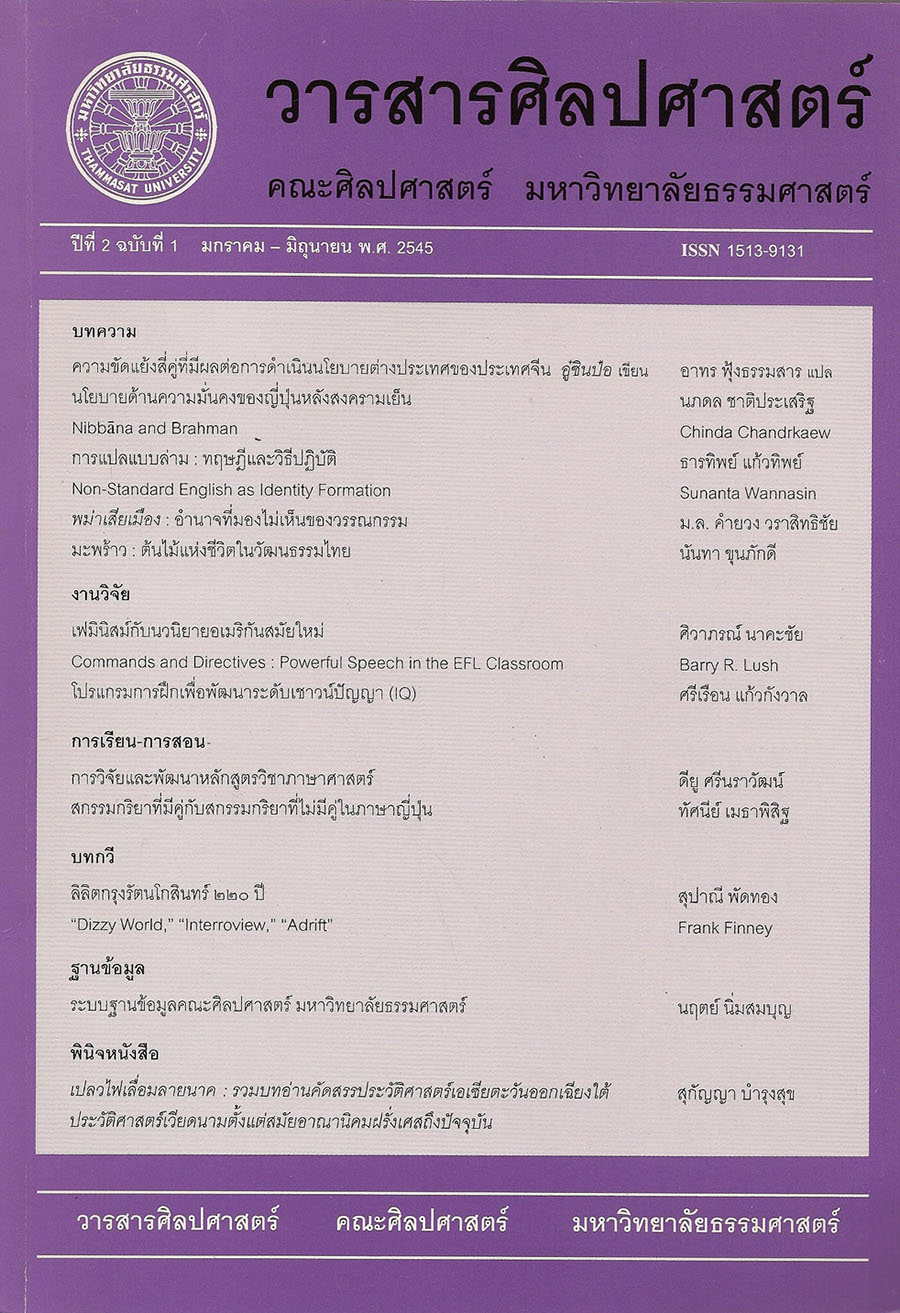การแปลแบบล่าม: แนวคิดเชิงทฤษฎีและวิธีปฏิบัติ
Main Article Content
บทคัดย่อ
บทความนี้มุ่งอธิบายกระบวนการของการแปลแบบล่ามโดยอ้างอิงจากทฤษฎีการแปลแบบยึดความหมายซึ่งดานิกา เซเลซโกวิทซ์ และมารีอานน์ เลเดแรร์ ร่วมกันวางรากฐานในช่วงทศวรรษ 1970 ทั้งสองได้ศึกษาวิเคราะห์วิธีปฏิบัติงานล่ามในสถานการณ์จริงและชี้ให้เห็นกลไกของกระบวนการที่ดำเนินไป กล่าวคือ ล่ามมิได้แปลคำพูดที่ตนได้ยินในภาษาต้นทางเพราะไม่อาจจำได้ทุกคำ แต่จะ “ผละออก” จากภาษา เพื่อ “จับความหมาย” หรือ “สาร” ที่ผู้พูดต้องการสื่อ และนำมาถ่ายทอดเป็นภาษาปลายทางอย่างเป็นธรรมชาติที่สุด ทั้งนี้ “ความหมาย” ที่กล่าวถึงแตกต่างจากความหมายของคำที่นักภาษาศาสตร์ศึกษาล่ามทำงานกับความหมายในระดับวาทกรรมซึ่งเกิดจากการประมวลความหมายของคำในภาษาเข้ากับองค์ประกอบ “นอกภาษา” ไม่ว่าจะเป็นสถานการณ์การสื่อสารหรือความรู้เกี่ยวกับหัวข้อเรื่องนั้นๆ กระบวนการแปลดังกล่าวเป็นกระบวนการเดียวกันทั้งในการแปลล่ามตามหลังผู้พูดและการแปลล่ามพร้อมผู้พูด อย่างไรก็ดี การปฏิบัติงานล่ามแต่ละรูปแบบมีแนวทางปฏิบัติต่างกันออกไป และเอื้อประโยชน์ต่อการสื่อสารระหว่างกันในสถานการณ์ต่าง ๆ มากมายในปัจจุบัน
This article presents theoretical considerations about the interpretation process by referring to the interpretative theory of translation elaborated by Danica Seleskovitch and Marianne Lederer in the seventies. Their studies on interpreters’ work in reak situations reveal the mechanism of the interpretation process. Interpreters do not translate spoken words in the source language they already forgot at the end of the utterance, but step back from them in order to seize the speaker’s “meaning” or “message” and render it into the target language as naturally as possible. It is evident that the word “meaning” here is not the one used in early linguistic theories. In fact, interpreters work at the discourse level, combining the semantic indications with all the extra-linguistic elements (situational and cognitive complements) in order to get the “message”. The interpretation process is identical for the two modes of interpreting: consecutive and simultaneous interpreting. However, there are differences in practice. The last part of the article mentions various situations where the two modes of interpreting are needed nowadays.


